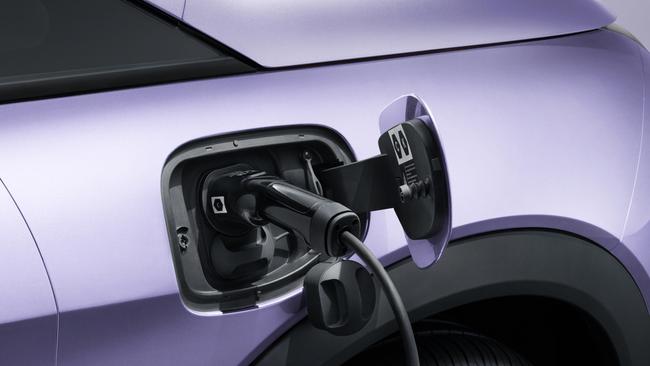Charging a fortune: the hard numbers behind an EV journey
Troubles in electric vehicle charging infrastructure coupled with rising costs ensure electric cars still remain in the minority.

Electric vehicle charging – what you might call the infrastructure wing of the EV boom – is facing a mini crisis as other parts of the ecosystem come under pressure.
Tesla – the proxy for the EV industry – has just missed its revenue and profit estimates while also providing a disappointing 2024 production forecast.
In Australia, the headline issue has been the troubles at EV charger manufacturer Tritium.
The company was once valued at $US2bn when it listed on the Nasdaq in 2021. More recently, it has fallen from grace, with the group now worth $US19m.
In fact, Tritium shares have fallen from a $US10 IPO price to less than US12c today and are at risk of being delisted from the Nasdaq if the share price does not increase to at least $US1 in the coming months under listing rules.
Once touted as one of Australia’s biggest success stories, Tritium had been spoken fondly by Prime Minister Anthony Albanese as recently as October 2023 with regard to its innovation and success. Although the company has 6000 chargers deployed in America alone and has charging stations in more than 30 other countries, it has been plagued with quality-control issues.
Investors have fled fearing the company’s ability to fulfil warranty claims.
If you have an electric vehicle, you will understand that public EV charging stations have positives and negatives.
If you are one of the 1.9 million Australian households who do not have off-street parking, you will find the public charging stations a necessity. However, the drawbacks are the time, the reliability and the cost.

Unlike a five-minute petrol stop, EV charging can take anywhere from 30-60 minutes with so-called super fast chargers dotted around major capital cities.
And this is on the assumption that the charging station is not being used by someone else, and that it is not broken!
And to make matters worse, Evie, one of Australia’s largest privately owned EV charging station operators with hundreds of charging stations around the country, has just increased charging prices by up to 43 per cent.
The result – it is now cheaper to drive a combustion engine vehicle powered with regular unleaded fuel from Sydney to Melbourne, compared with an equivalent electric vehicle.
For the slower 22kW public chargers, the price has increased from 35c per kWh to 50c, while fast charging at 150kW has increased by a smaller amount, from 60c per kWh to 68c.
Here is the maths – the average electric vehicle has a 60kWh battery capacity and a real world energy consumption of 20kWh per 100km driven. This means it can drive about 300km before having to be recharged. At 68c per kWh to recharge, it will cost $40.80 to charge your EV using a publicly accessible fast charger.
The petrol version of the Toyota Camry consumes 1 litre of fuel per 15km in real world environments. Assuming a $2 a litre petrol price, if a Camry owner filled $40.80 worth of fuel they would be able to drive 306km, 6km more than the EV.
Of course, if you can charge an EV at home it will be much cheaper, but it seems like we are quickly moving towards the US situation of having too many EVs chasing too few charging stations.
The federal government has been active in trying to address this issue and the Australian Renewable Energy Agency (ARENA) has provided $871,000 funding to a $2.04m project in NSW. Fifty locations have been chosen where Schneider EV charging stations will be installed on to existing electricity power poles and connected to the overhead electricity supply.
At $40,000 a pop, they are not cheap, but the hope is that thousands of these power pole EV chargers will eventually be installed across densely populated parts of capital cities to support the growing uptake of electric vehicles.
But with the government embarking on a rapid transition to renewable energy for baseload electricity supply, hard economics suggest that if demand increases and supply happens to fall, electricity prices will go up or more regular blackouts may occur.
EVs continue to be a popular choice, especially for high-income earners under the electric car discount bill where 100 per cent of pre-tax income can be used to fund an EV up to $89,332 via a novated lease.
But the rise of the EV needs to be matched with the appropriate energy planning from the government – until then many people will wonder why they should bother.
James Gerrard is principal and director of Sydney planning firm www.financialadvisor.com.au






To join the conversation, please log in. Don't have an account? Register
Join the conversation, you are commenting as Logout